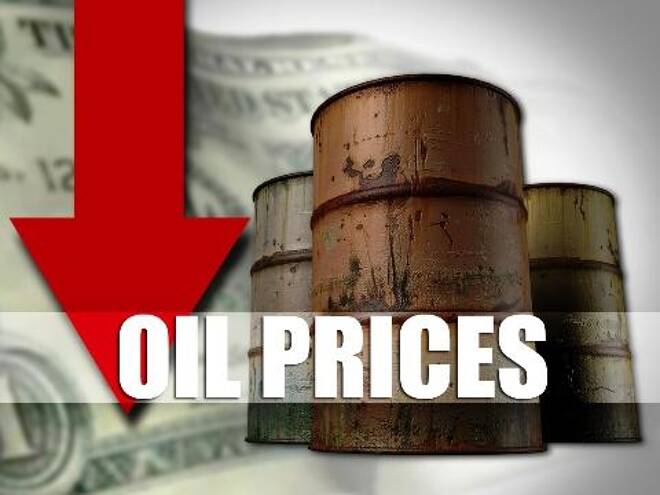Advertisement
Advertisement
How Low Will Crude Oil Fall?
By:
Crude oil continued to sink as markets opened on Wednesday. The downgrade in global growth by the IMF weighed heavily on the commodities markets. Crude
The trade action also reflected market expectations for a build in US crude stocks in Wednesday’s Department of Energy report. On average, analysts estimated US crude inventories increased by 1.9 million barrels in the week ending Oct 3, according to a poll by Dow Jones.
The U.S. shale boom is producing record amounts of new oil as demand weakens, pushing prices down toward levels that threaten to reduce future drilling. Domestic fields will add an unprecedented 1.1 million barrels a day of output this year and another 963,000 in 2015, raising production to the most since 1970, according to the U.S. Energy Information Administration. The Energy Department’s statistical arm forecasts consumption will shrink 0.2 percent to 18.9 million barrels a day this year, the lowest since 2012.
More supply from hydraulic fracturing and horizontal drilling, and less demand, are contributing to the tumble in West Texas Intermediate crude. The U.S. benchmark is down 17 percent since June 20 and fell below $90 a barrel on Oct. 2 for the first time in 17 months.
The EIA cut 2014 and 2015 crude price forecasts yesterday because of rising production and falling consumption. WTI will average $94.58 next year, down from a September projection of $94.67. The outlook for Brent oil, the benchmark for more than half of the world’s crude, was lowered to $101.67 from $103. U.S. output reached 8.7 million barrels a day in September, the most since July 1986, the EIA said. U.S. demand is down because Americans are driving less and using more fuel-efficient cars, according to the EIA.
As U.S. supply rises and imports decline, the Organization of Petroleum Exporting Countries may be heading for a price war, according to Frankfurt-based Commerzbank AG. OPEC’s September output rose to a one-year high of 30.935 million barrels day.
Saudi Arabia, the world’s largest exporter, reduced selling prices on Oct. 1, signaling it is prepared to let prices fall rather than cede market share, according to Commerzbank. OPEC accounts for about 42 percent of world supply, according to London-based BP Plc, Europe’s third-largest oil company.
Gasoline continues to decline as drivers enjoy the benefits of the drop in crude oil and Brent oil prices. Retail gasoline is forecast to average $3.45 a gallon this year and $3.38 in 2015. That’s down from last month’s forecasts of $3.46 and $3.41.
Natural gas declined 18 points to trade at 3.924 after climbing steadily on Tuesday as weather forecasts keep the commodity jumping. The U.S. has approved four facilities to liquefy gas for exports. While the U.S. prohibits most crude exports, finished products such as gasoline trade freely. Producers are lobbying to loosen the rules for crude too.
About the Author
Barry Normanauthor
Did you find this article useful?
Latest news and analysis
Advertisement
